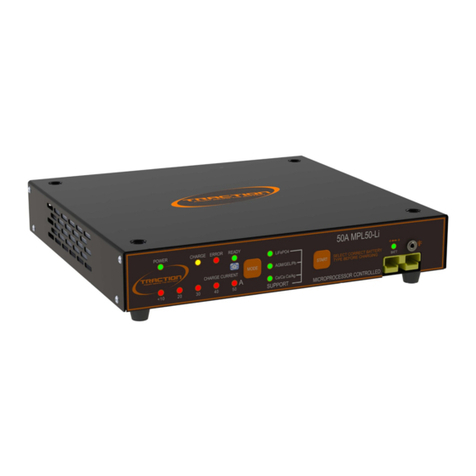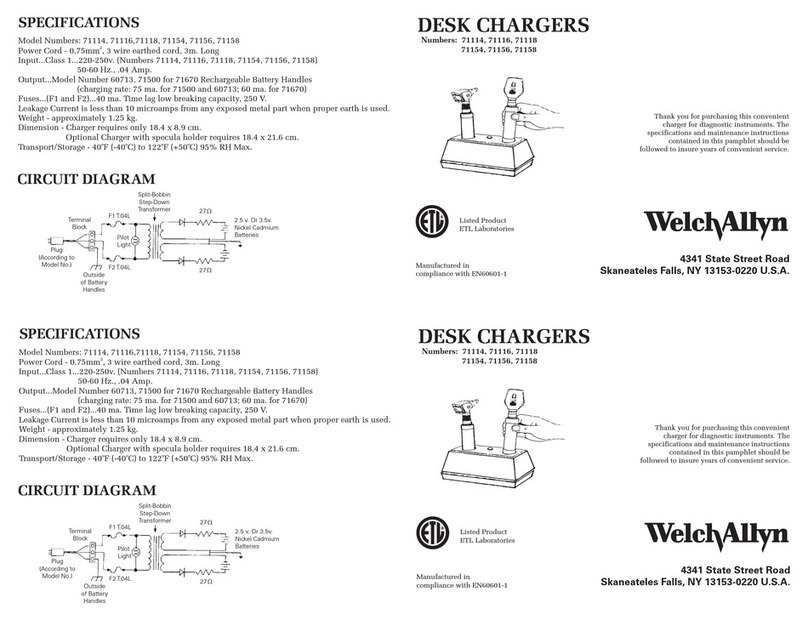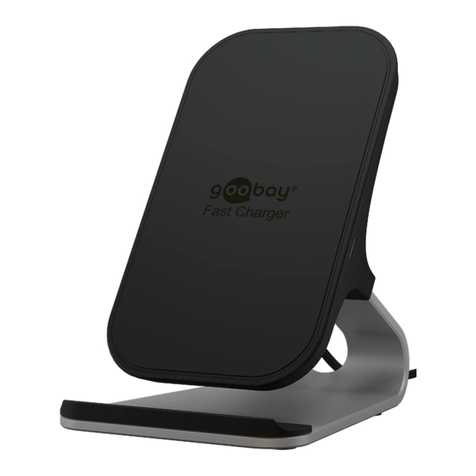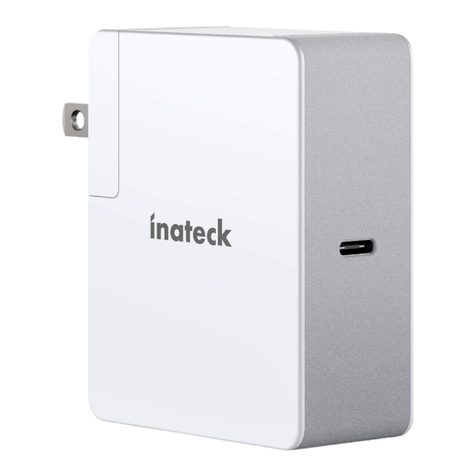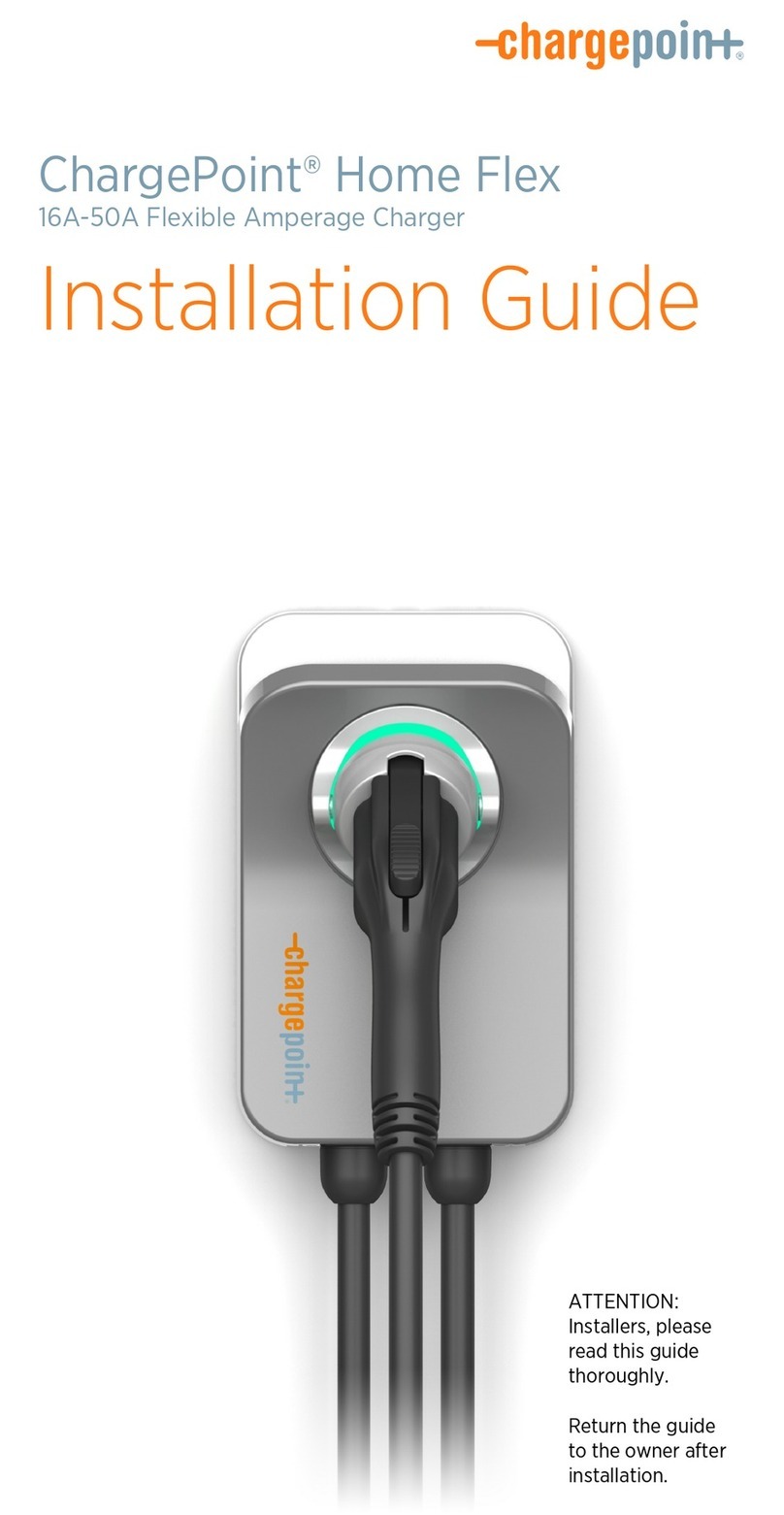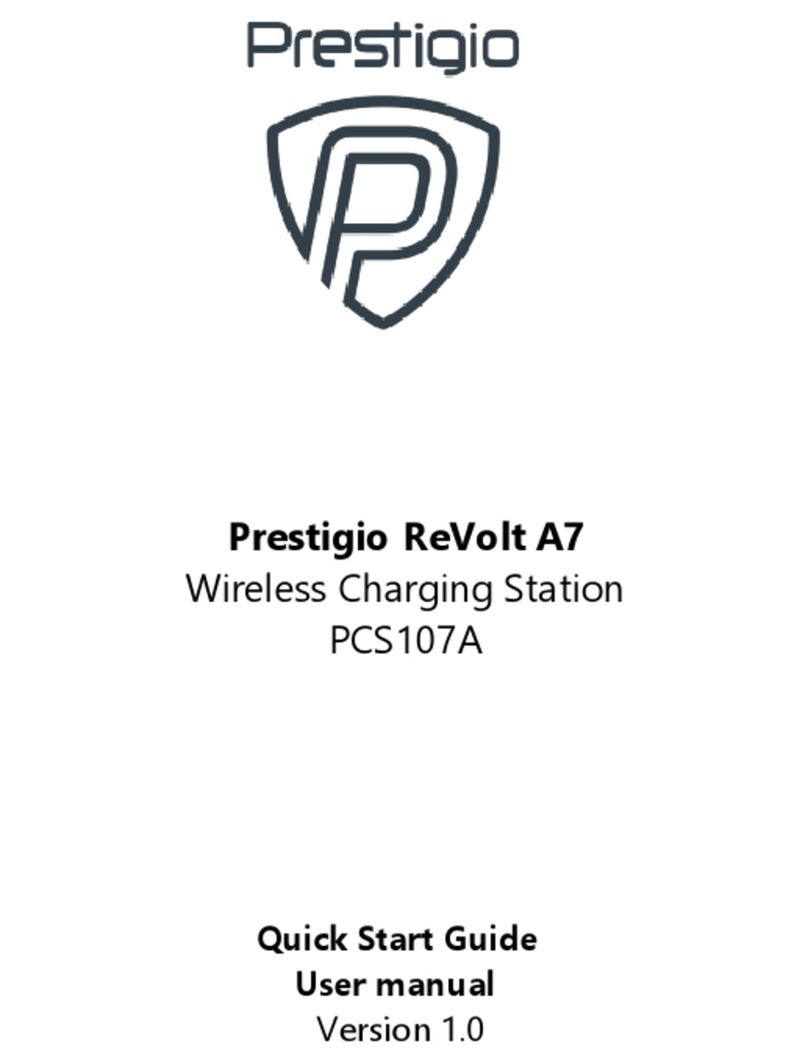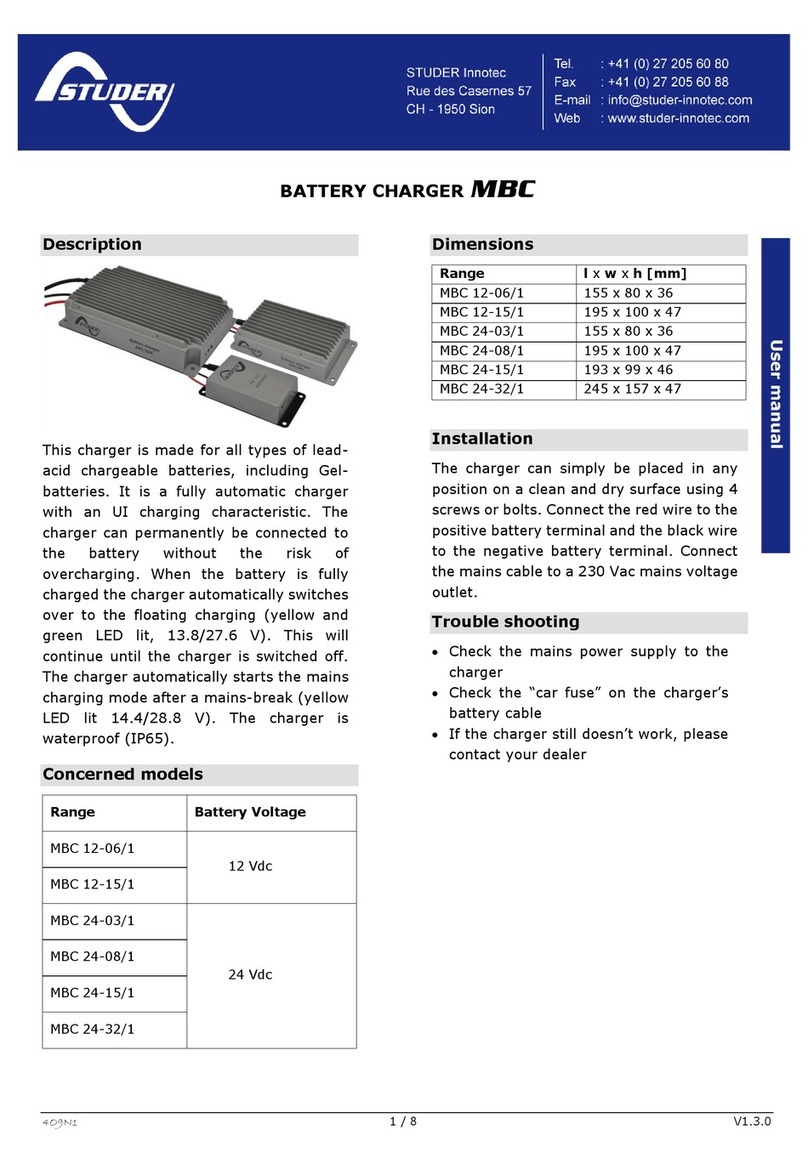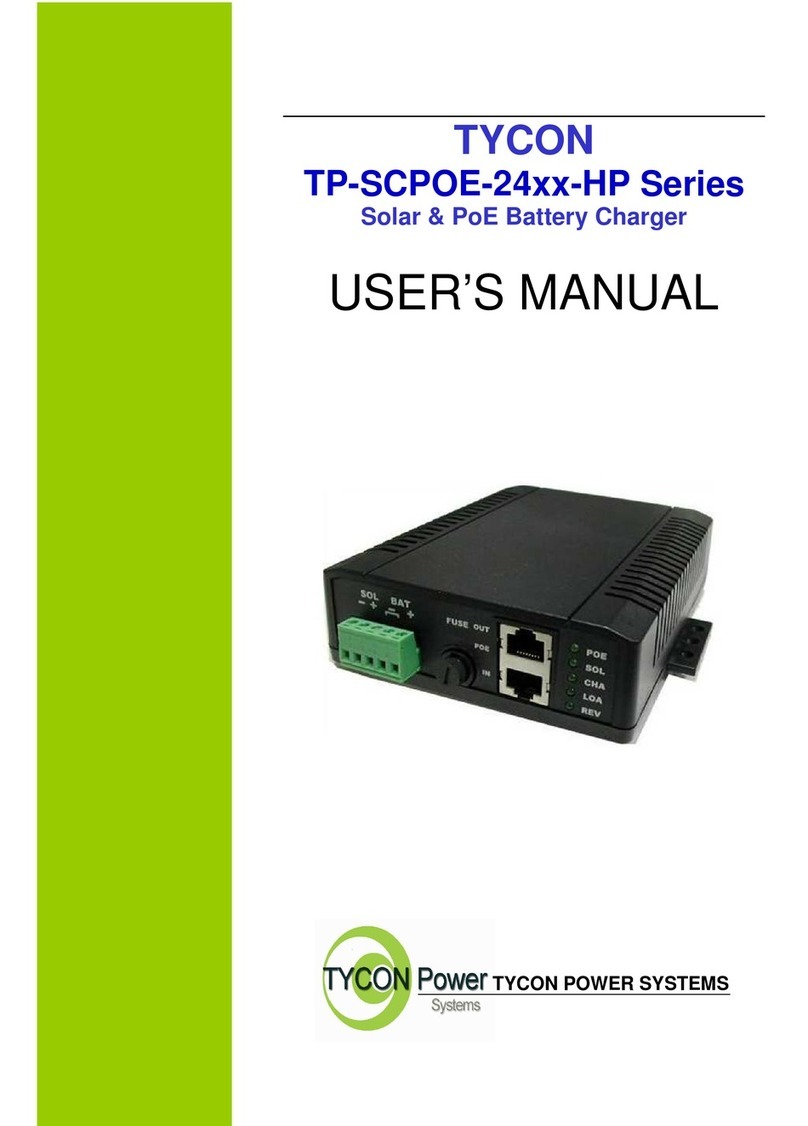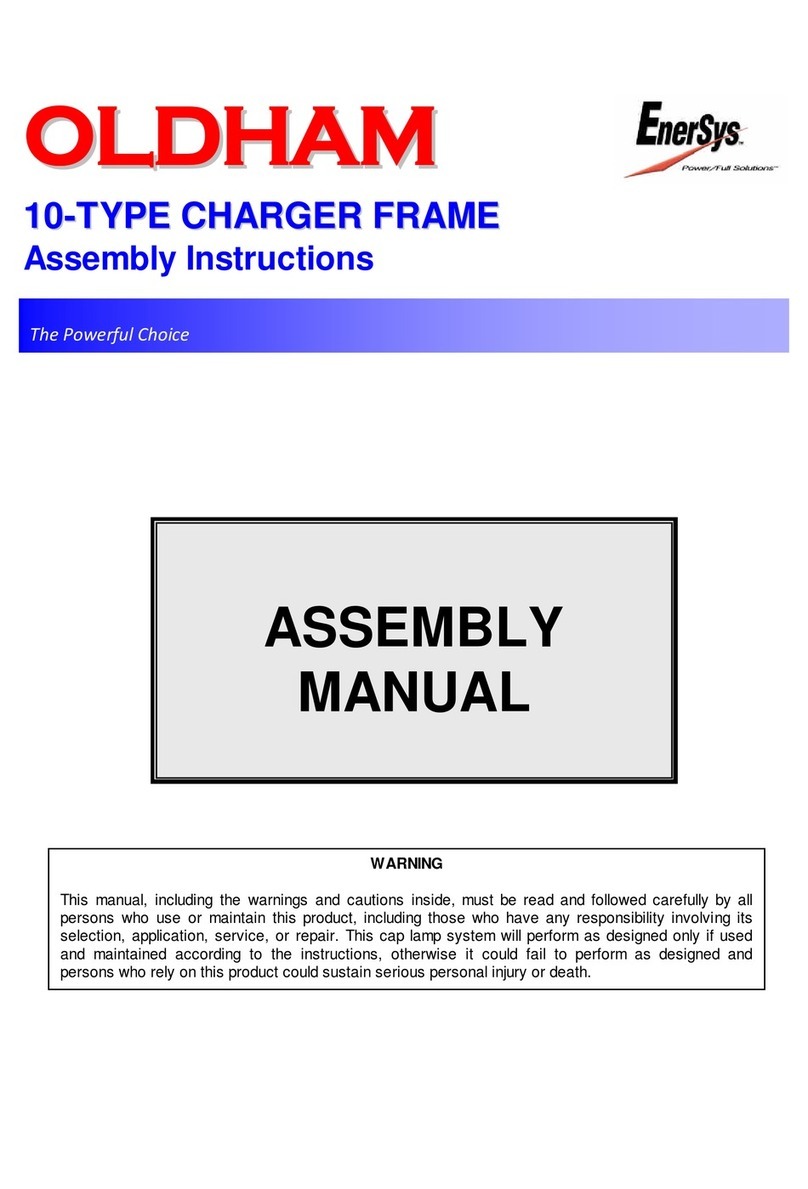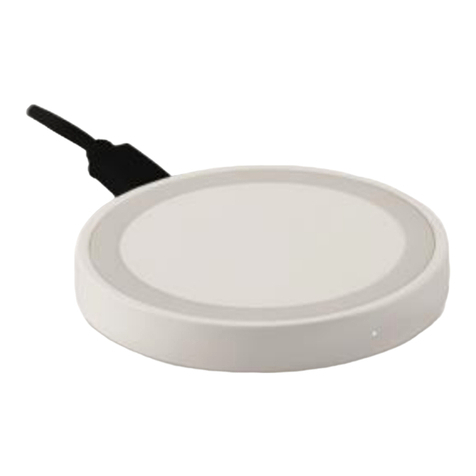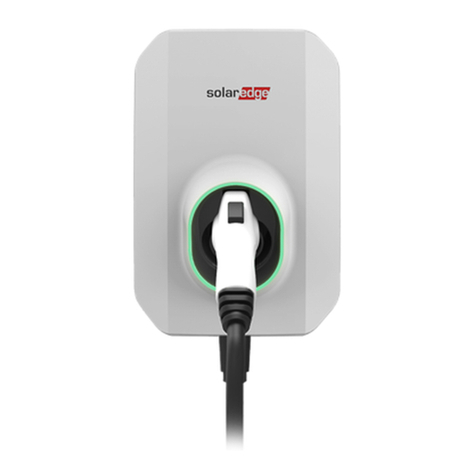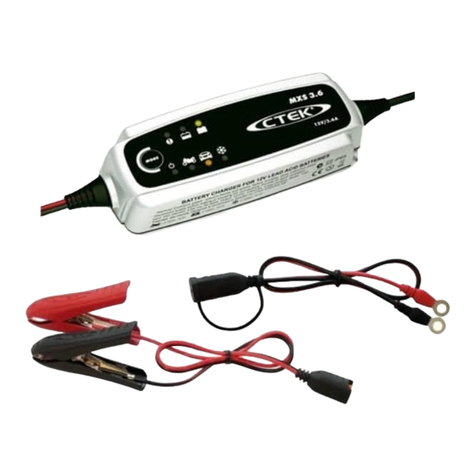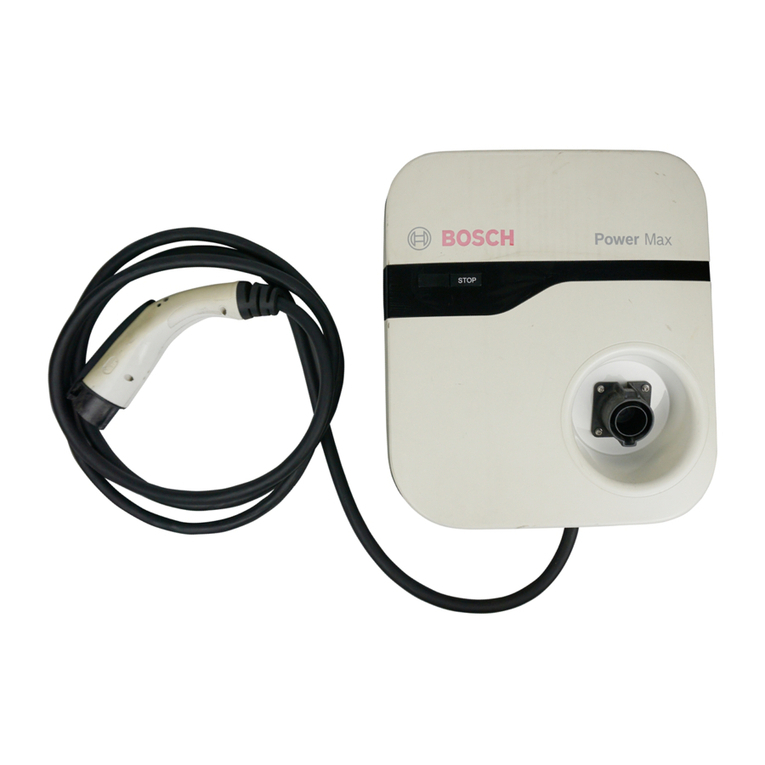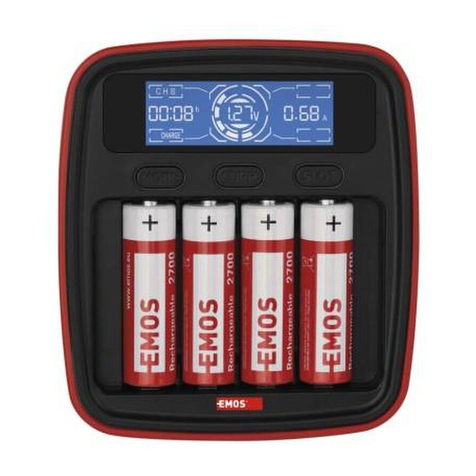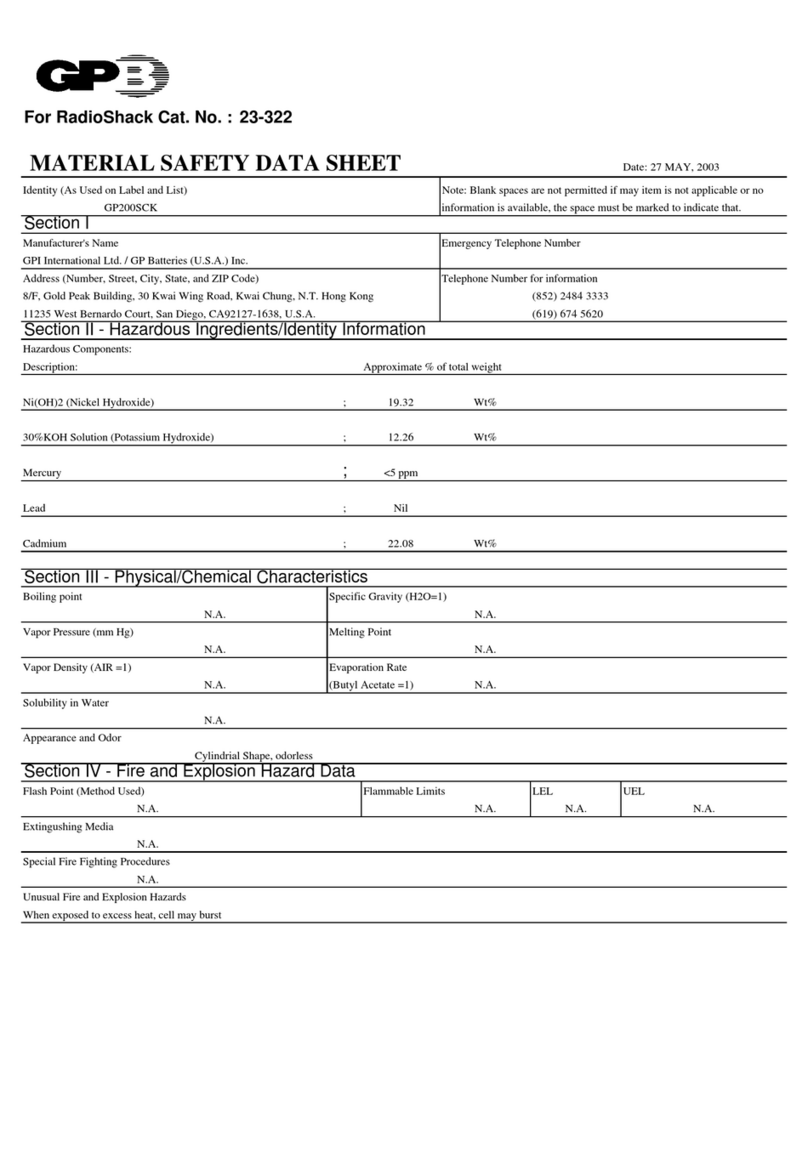TRACTION MPL50 User manual

5347-MAN-038-EN1-01 230VAC
MPL50-Operating Instructions
MPL12/50A
INSTRUCTION MANUAL

5347-MAN-038-EN1-01 230VAC
⚠Safety Guideline
1. General Safety Precautions
SAVE THESE INSTRUCTIONS.
1.1. IMPORTANT SAFETY INSTRUCTIONS. IT IS OF
UTMOST IMPORTANCE THAT BEFORE USING
YOUR BATTERY CHARGER, YOU READ THIS
MANUAL AND FOLLOW THE SAFETY AND
OPERATING INSTRUCTIONS EXACTLY.
1.2. Use of an attachment not recommended or sold
by the Battery Charger manufacturer may result
in a risk of fire, electric shock, or injury to
persons
1.3. To reduce risk of battery explosion, follow these
safety instructions and those published by the
battery manufacturer and the manufacturer of
any equipment you intend to use near a battery.
Review cautionary marking on these products
and on the engine, and on the vehicle or
equipment containing the battery.
If you are uncertain as to the type of battery
you are attempting to charge, or the correct
procedure for checking the battery's state of
charge, contact the seller or battery
manufacturer.
The charger is not intended to supply power to
a low-voltage electrical system other than
applications using rechargeable, flooded type
batteries. Do not use the battery charger for
charging dry-cell batteries commonly used with
home appliances. These batteries may burst and
cause personal injury and property damage.
WARNING
Charging a non-rechargeable battery may
cause the battery to burst.
To reduce the risk of injury, only charge
rechargeable flooded type batteries
including maintenance free, low
maintenance, or deep-cycle batteries.
WARNING
Risk of explosive gases.
Batteries generate explosive gases during
normal operation and when discharged or
charged.
1.4. Never charge a frozen battery.
1.5. To reduce the risk of damage to the electric plug
and cord, pull by the plug rather than by the
cord when disconnecting the unit.
1.6. Position the AC and DC leads to avoid tripping
over them and to prevent damage by hood or
moving engine parts. Protect from heat, oil and
sharp edges.
1.7. Do not operate the unit if it has received a sharp
blow, been dropped or otherwise damaged in
any way. Take it to an approved service centre.
1.8. Do not disassemble the unit. Take it to an
approved repair centre when repair is required.
Incorrect reassembly may result in a risk of
electric shock or fire.
1.9. To reduce risk of electric shock, unplug the
charger from the AC outlet and disconnect DC
output leads before attempting any
maintenance or cleaning. Turning off the
controls will not reduce this risk.
1.10. Connect and disconnect the battery leads only
when the AC supply cord is disconnected.
1.11. Never place articles on or around the unit or
locate the unit in a way that will restrict the flow
of cooling air through the enclosure.
1.12. An extension cord should not be used unless
absolutely necessary.
1.13. Have a damaged cord or plug replaced
immediately.
1.14. Do not expose the unit to rain or snow. Use the
charger in a dry area.

5347-MAN-038-EN1-01 230VAC
1.15. Risk of explosive gasses. Batteries generate
explosive gasses. Charge the battery in a well-
ventilated area. Do not overcharge the battery.
2. Personal Precautions
2.1. Warning – California Proposition 65.
Battery port and related items contain lead and
lead compounds, chemicals known to the state
of California to cause cancer and birth defects of
other reproductive harm. Wash hands after
handling.
2.2. Wear complete eye protection, clothing
protection, and wear rubber soled shoes. Place
damp cloth over battery to protect against acid
spray. When ground is very wet or covered with
snow, wear rubber boots. Avoid touching eyes
while working near battery.
2.3. If battery acid contacts skin or clothing, wash
immediately with soap and water. If acid enters
the eye, immediately flush with cold running
water for at least 10 minutes and seek medical
attention. Have plenty of fresh water and soap
nearby in case battery acid contacts skin,
clothing or eyes
2.4. Always have someone within range of your
voice, or close enough to come to your aid,
when working around flooded batteries.
2.5. NEVER smoke or allow a spark or flame near a
battery or engine.
2.6. Before working with a flooded battery, remove
personal metal items such as rings, bracelets,
necklaces, watches, etc. A flooded battery can
produce a short circuit current high enough to
weld such items causing a severe burn.
2.7. Be extra cautious to reduce risk of dropping a
metal tool onto the battery. It might spark or
short circuit the battery or other electrical part
that may cause an explosion.
3. Charging a Battery.
3.1. Be sure the area around the battery is well
ventilated while the battery is being charged.
Gas can be forcefully blown away by using a
piece of cardboard or other non-metallic
material as a fan.
3.2. If it is necessary to remove the battery from
vehicle to charge it, always remove the
grounded terminal from the battery first. Make
sure all accessories in the vehicle are off, so as
not to cause an arc.
3.3. Study all battery manufacturer's specific
precautions such as removing or not removing
cell caps while charging and recommended
rates of charge.
3.4. Add distilled water in each cell until the battery
acid reaches the level specified by the
manufacturer. This helps purge excessive gas
from the cells. Do not overfill. For a battery
without caps, carefully follow the
manufacturer's recharging instructions
3.5. Make sure that the charger output voltage and
battery type is correct for the battery voltage
and battery type you wish to charge.
3.6. Clean the battery terminals. Be careful to keep
corrosion from coming into contact with your
eyes.
4. Grounding and AC Power Cord Connection.
4.1. The charger must be grounded to reduce risk of
electric shock. The charger is equipped with an
electric cord having an equipment grounding
conductor and a grounding plug. The plug must
be plugged into an outlet that is properly
installed and grounded in accordance with all
local codes and ordinances.
DANGER
Hazardous voltage.
An improper connection can result in
electric shock
To avoid electrical shock or bum, never alter
the charger's original AC cord and plug.
Disconnect plug from outlet when charger is
idle.
4.2. This battery charger is for use on a nominal 120-
volt circuit with a grounding circuit.
Do not use with an adapter.
4.3. If the plug does not fit the outlet have the
correct outlet installed by a qualified electrician.
The outlet must be earthed.

5347-MAN-038-EN1-01 230VAC
4.5. An extension cord should not be used unless
absolutely necessary. Use of an improper
extension cord could result in a risk of fire and
electric shock. If an extension cord must be
used, make sure:
a) That the pins on plugs of the extension cord
are the same number, size, and shape as those
of the plug on the charger;
b) That the extension cord is properly wired and
in good electrical condition;
c) That the wire size is large enough for the AC
ampere rating of charger as specified in the
following table
Recommended minimum AWG size for extension cords for battery support units
AC input rating Amperes AWG size of cord
Length of cord, M
7.5 15 30 45
8-10 18 14 12 8
10-12 16 14 10 8
12-14 16 12 10 8
14-16 16 12 10 8
16-18 14 12 10 8
5. Connecting to a vehicle
Please follow dealer standards guidelines for
connection methods.
Traction units are supplied with vehicle specific
adapters that should be used at all times.
Failure to use the adapters in the positions
prescribed could result in excessive heat being
generated in the lead set leading to premature
failure of leads and low voltage output.
Output leads are connected using the polarised
connectors on the unit and lead set.
The primary method for powering the support
unit is via the AC power cord.
6. Warranty and Service.
For technical support call 866-628-5508 or email
oetech@service-solutions.com.
For repair service, go to
repairtrack.bosch-automotive.com
or call 800-344-4013
7. Manufacturer Information
Traction products are manufactured by:
Traction Chargers
Roundway Hill Business Centre
Devizes
Wiltshire
SN10 2LT UK
+44(0)330 022 7822
admin@tractioncharger.com
This symbol is used on products that contain a hazardous element and therefore
cannot be thrown away in the normal way. it appears on Electrical and Electronic
Equipment (EEE) as part of the WEEE (Waste EEE) directive – separate collection
facilities will be set up to divert WEEE away from landfill; funded by producers and
retailers of EEE

5347-MAN-038-EN1-01 230VAC
8. Symbols Explained:
Please refer to these instructions.
Ca/Ca Calcium/Calcium battery
Ca/Ag Calcium/Silver battery
AGM Absorbent Glass Mat
GEL Gel maintenance free battery
A Amps
9. Technical Specification
Environmental Information
Working Temp. °C
Working Humidity
Storage Temp. °C
Storage Humidity
Input Voltage Range
Input Current(Typ)
O/P Rated Current
O/P Rated Power
Dimensions WxHxD
O/P Fuse Type
+0 to +40
20 – 90% non-condensing
-40 - +85
10 – 95% RH
230 – 240VAC
6.5A/240VAC
50A
750W
280 x 230.5 x 260mm
F2 63A, BS88 240Vac 50kA Min

5347-MAN-038-EN1-01 230VAC
BATTERY CHARGER MODEL MPL50
INSTRUCTIONS FOR USE
WARNING
1. DO NOT USE THIS BATTERY CHARGER OUTSIDE, FOR INDOOR USE ONLY.
2. DO NOT USE THIS BATTERY CHARGER IF IT BECOMES WET OR IF THE OUTPUT OR INPUT
LEADS ARE DAMAGED.
3. DO NOT OBSTRUCT THE VENTILATION SLOTS IN THE CHARGER CABINET.
4. THE BATTERY MUST BE CHARGED IN A WELL-VENTILATED AREA.
5. WHEN THE BATTERY IS REQUIRED, DISCONNECT FROM THE MAINS BEFORE
DISCONNECTING FROM THE BATTERY.
6. THE PLUG IS THE PRIMARY DISCONNECT AND SHOULD BE READILY ACCESSIBLE AT ALL
TIMES.
A. CONNECT THE OUTPUT LEAD (RED) TO THE POSITIVE (+) BATTERY TERMINAL.
B. CONNECT THE OUTPUT LEAD (BLACK) TO THE NEGATIVE (-) BATTERY TERMINAL.
C. CONNECT THE BATTERY CHARGER MAINS LEAD TO A SUITABLE ELECTRICAL
SUPPLY. (SEE REAR OF CHARGER)
D. IF REQUIRED, SWITCH ON THE ELECTRICAL SUPPLY FOLLOWED BY THE CHARGER
“ON” SWITCH (IF FITTED).
E. MAKE SURE THAT THE MAINS POWER (RED) LED IS ILLUMINATED.
F. ALL THE RED LED’S WILL FLASH CONSECUTIVELY.
G. THE CHARGING AMBER LED WILL ILLUMINATE FOLLOWED BY THE FIVE RED LED’S
SHOWING PERCENTAGE OF CHARGE.
H. WHEN THE CHARGE IS COMPLETE THE GREEN LED WILL ILLUMINATE. THE
BATTERY. CHARGER CAN BE LEFT CONNECTED TO THE BATTERY UNTIL REQUIRED
FOR USE. THERE IS NO DANGER OF OVERCHARGING THE BATTERY.
I. THE MPL50 CHARGER HAS BEEN SET TO SUIT VARIOUS BATTERY TYPES FROM 80
TO 500 AMP/HOUR.
7. POWER OFF MPL50 BEFORE SELECTING BATTERY SUPPORT MODE.
CHARGE INDICATION
AGM/GEL LEAD ANTIMONY: 1.3.4.5.6.7
Ca/Ca/Ag LEAD CALCIUM: 1.2.3.4.5.6.7
ON
FLASHING
1. Power On -
No Charge
2. Half output for first
hour
3. Constant Current -
Dependant on charge
4. Constant Voltage
Mode
5. Reducing charge
current
6. Constant voltage -
Standby mode
7. Cycle complete -
Battery did not
reach full charge.

5347-MAN-038-EN1-01 230VAC
BATTERY CHARGER MODEL MPL50 FLOW CHART
BATTERY AND MAINS
SUPPLY CONNECTED
TO CHARGER
SWITCH ON
FAULT WITH MAINS
SUPPLY
POWER
LAMP
ON?
NO
AMBER
LIGHT CHECK D.C CONNECTED
CORRECTLY
NO
RED %
LAMPS
RED 20%
1 LAMP
RED 40%
2 LAMPS
RED 60%
3 LAMPS
RED 80%
4 LAMPS
YES
BATTERY FLAT
BULK CHARGE
AMBER
LIGHT
FLASHING
?
PARTLY CHARGED
BATTERY
TIMER RUNNING
DEEPLY DISCHARGED
DE-SULPHATION PROGRAM IN
OPERATION (HIGH IMPEDENCE)
YES
GREEN
LAMP?
CHARGE COMPLETE
LEAVE ON UNTIL
REQUIRED
CYCLE COMPLETE -
BATTERY DID NOT
REACH FULL CHARGE.
TEST BATTERY.
ON
OFF
FLASHING
NO
DEEPLY DISCHARGED
DE-SULPHATION PROGRAM IN
OPERATION (LOW IMPEDENCE)
RED 100%
ALL LAMPS
CHARGE / DESULPHATION
STILL IN PROGRESS
NO
Table of contents
Other TRACTION Batteries Charger manuals
